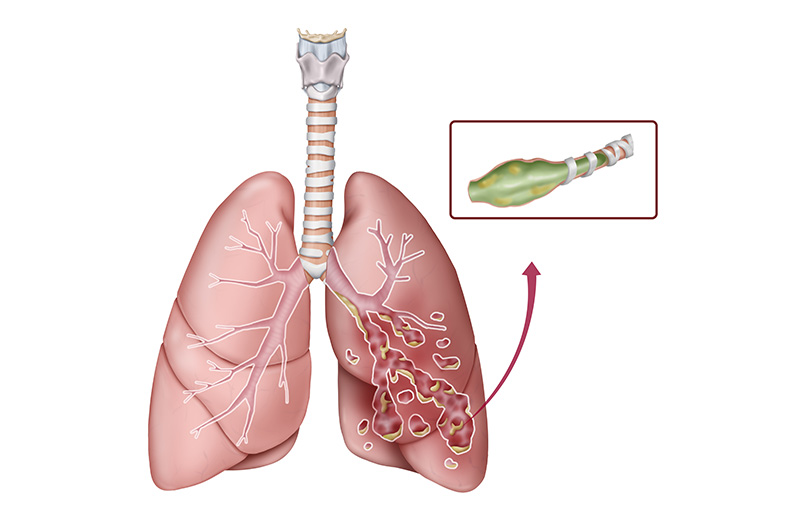Bronchiectasis: Diagnosis, Causes and Treatment
Bronchiectasis is a chronic lung condition in which the airways become enlarged and inflamed. This disorder occurs as a result of deterioration of the structure of the bronchi.

Bronchiectasis: Diagnosis, Causes and Treatment
Bronchiectasis is a chronic lung condition in which the airways become enlarged and inflamed. This disorder occurs as a result of deterioration of the structure of the bronchi.
What is Bronchiectasis?
Bronchiectasis refers to the widening and thickening of the airways called bronchi. This condition leads to increased phlegm accumulation and inflammation of the respiratory tract due to the deterioration of the structure of the bronchi. These inflamed bronchi have difficulty clearing phlegm buildup and, as a result, can cause bacteria or other particles to accumulate. Losing the structure of the bronchi causes bleeding, which can be life-threatening.
What are the causes of bronchiectasis?
Bronchiectasis can develop for a number of different reasons. Here are some common reasons:
Infections: Chronic or recurring respiratory infections can lead to bronchiectasis.
Genetic Factors: Some genetic disorders may increase the risk of bronchiectasis.
Foreign Bodies: Foreign objects or irritants entering the respiratory tract can cause bronchiectasis.
Immune System Problems: Immune system disorders can cause the body to become vulnerable to infections.
Gastroesophageal Reflux Disease (GERD): The backward flow of stomach contents can damage the airways and trigger bronchiectasis.
What are the symptoms of bronchiectasis?
Bronchiectasis symptoms may vary from person to person. However, these are common symptoms:
- chronic cough
- excessive phlegm production
- Bloody sputum or bleeding from the bronchi
- chest pain
- respiratory distress
- Weakness and fatigue
- Grunting and wheezing sounds
What are the Bronchiectasis Treatment Options?
Treatment for bronchiectasis may vary depending on the cause of the condition and the severity of symptoms. Here are some common treatment options:
Surgical Treatment: In appropriate cases, surgical removal of the lung area causing bronchiectasis is the most effective treatment. Bronchiectasis, which is a progressive disease, can cause disease to develop in healthy lung areas if left untreated. Surgical treatment can be performed with closed methods such as Robotics or VATS, or openly with thoracotomy.
Medications: Doctors may prescribe medications to relieve symptoms and keep infections under control. Antibiotics, expectorants and breath relievers are frequently used medications.
Physical Therapy: Physical therapists can teach special exercises and breathing techniques to help clear phlegm.
Bronchiectasis is a disorder characterized by enlargement and inflammation of the airways. Early diagnosis and treatment can help relieve symptoms and prevent disease progression. If you are experiencing symptoms of bronchiectasis or are concerned about it, you should contact a healthcare professional. Every individual's situation is different, so a professional diagnosis and treatment plan is important.